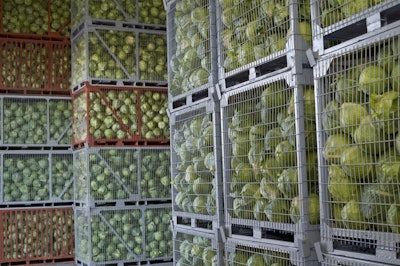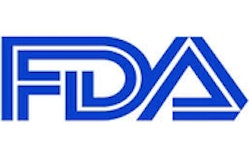
The Food and Drug Administration (FDA) Food Safety Modernization Act (FSMA) was signed into law on Jan. 4, 2011. This legislation is aimed at improving FDA’s capacity to prevent, detect, and respond to food safety problems and foodborne illness outbreaks. FSMA provides FDA with new enforcement authorities such as mandatory recall authority and the authority to suspend a food facility’s registration, gives FDA the ability to hold imported foods to the same standards as domestic foods, and places a number of new food safety obligations on food manufacturers, farms, handlers, and other entities involved in the food supply chain.
Congress established specific implementation dates in the legislation. Some of the provisions went into effect quickly, but others required FDA to promulgate regulations. Notably, in 2013, FDA issued four key proposed rules governing: 1) “Standards for the Growing, Harvesting, Packing, and Holding of Produce for Human Consumption”; 2) “Current Good Manufacturing Practice and Hazard Analysis and Risk-Based Preventive Controls for Human Food”; 3) “Current Good Manufacturing Practice and Hazard Analysis and Risk-Based Preventive Controls for Food for Animals”; and 4) “Foreign Supplier Verification Programs for Importers of Food for Humans and Animals.” The comment periods for these original proposed rules closed in late 2013 and early 2014.
After an initial review of public comments, on Sept. 19, 2014, FDA released four long-awaited “supplemental notices of proposed rulemaking” that propose modifications to the original four proposed rules. The latest round of proposed changes are based on extensive public input, and are intended to make the original proposals more flexible, practical, and targeted. FDA is accepting public comments solely on the issues raised in the supplemental notices until Dec. 15, 2014. Under a court order, FDA is required to issue the final rules in 2015.
Provided below is a topline overview of the supplemental proposed rules 1,2 and 4 that highlights some of the more notable proposed changes.
Supplemental Proposed Rule on Produce Safety
FDA’s rule on produce safety is intended to establish science-based standards for growing, harvesting, packing, and holding produce on certain domestic and foreign farms. The original proposed rule focused on the commonly identified routes of microbial contamination of produce, and proposed new standards in the following major areas: 1) farm worker training, health, and hygiene; 2) agricultural water; 3) biological soil amendments of animal origin and human waste; 4) domesticated and wild animals in growing areas; 5) equipment, tools, buildings, and sanitation; and 6) sprouts. In the supplemental produce safety proposal, FDA is proposing, among other things, the following key changes:
- Scope of the Proposal. In the original proposed rule, farms or farm mixed-type facilities with average annual food sales of $25,000 or less over the previous 3-year period were excluded from coverage of the proposed rule. After receiving comments expressing concern that this standard would unnecessarily require farms that primarily raise food grains or dairy cattle to comply with the produce safety standards, and would make it difficult for midsize farms to diversify their operations, FDA now proposes to revise this rule to base the threshold on produce sales rather than food sales. As such, covered farms with an average annual monetary value of produce sales less than $25,000 would not be subject to the produce safety provisions. FDA also proposes to make corresponding revisions to the definitions of “very small business” and “small business” so that the monetary value thresholds would apply to the average annual sales of “produce” instead of all “food.” Moreover, as discussed in more detail below, FDA is proposing to revise the definitions of, among other things, “farm,” “harvesting,” and “holding.” Under the revised definition of “farm,” the packing or holding of covered produce on a covered farm would be subject to the produce safety standards, as opposed to the preventive controls requirements, even if the produce were grown or harvested on another farm that is not under the same ownership.
- Agricultural Water. FDA proposes a number of revisions to the agricultural water standards contained in the original proposed rule. These revisions would, among other things: 1) update and provide additional flexibility for meeting the microbial quality standard for water that is used during the growing of produce (other than sprouts) using a direct application method; 2) provide a tiered-approach to the testing of agricultural water that would enable testing at a reduced frequency than that proposed in the original proposed rule; and 3) enable a farm to meet water testing requirements using the farm’s own test results or data collected by a third party.
- Biological Soil Amendments of Animal Origin. Many commenters expressed concern about FDA’s proposed 9-month minimum wait period between the application of raw manure and the harvesting of crops. In response, FDA plans to defer its decision on the appropriate time interval until the agency pursues certain actions, including conducting a risk assessment on the safe use of manure in fields and working with USDA and other stakeholders to conduct research to supplement the currently available research on this matter. The agency anticipates that these actions would take roughly five years to complete. In the meantime, FDA would not take exception to farmers complying with USDA’s National Organic Program standards, which generally require a 120-day interval. FDA also proposes to eliminate the requirement that farms apply a 45-day interval between the application of compost and the harvesting of a crop.
- Domesticated and Wild Animals in Growing Areas. The original proposed rule included standards for farmers to minimize the potential for contamination of produce with biological hazards from domesticated and wild animals. Many commenters expressed concern over the impact of the proposed rule on wildlife. The supplemental rule clarifies these standards, making it clear that this rule would not authorize farms to take actions that would constitute a “taking” of a threatened or endangered species, in violation of the Endangered Species Act. Farms also would not be required to take action to exclude animals from outdoor growing areas, destroy an animal’s habitat, or clear farm borders.
- Withdrawal of a Qualified Exemption - Farms that meet certain requirements are eligible for a qualified exemption from certain elements of the proposed rule. FDA proposes to make modifications to the procedure by which the agency may withdraw a farm’s “qualified exemption” status (for example, FDA proposes that it would need to notify a farm of its risk of losing its qualified exempt status and provide the farm an opportunity to respond), and to add a new procedure for reinstating a farm’s exempt status.
The proposed deadline for compliance with the final rule would be four years after the effective date for “very small businesses,” three years for “small businesses,” and two years for all other farms. All farms, however, would have two additional years beyond the compliance dates to meet the water quality standards and related testing and recordkeeping requirements.
Supplemental Proposed Rule on Preventive Controls for Human Food
In the original human food preventive controls proposal, FDA proposed to: 1) modernize the current good manufacturing practice (CGMP) requirements for human food; 2) require registered food facilities to establish and implement hazard analysis and risk-based preventive controls for human food; and 3) revise certain definitions in the existing regulation on the registration of food facilities to clarify the scope of an exemption from the registration requirement for “farms.” In the supplemental human food preventive controls proposal, FDA is proposing, among other things, the following key changes:
- Definition of “Farm”. FDA is proposing to revise the definition of “farm,” and to make certain conforming changes to the definitions of “harvesting,” “holding,” and “packing.” By way of background, establishments that fall within the definition of “farm” are exempt from FDA’s food facility registration requirements, and are therefore excluded from the proposed requirements for hazard analysis and risk-based preventive controls for human food as well as certain other requirements that are conditional on facility registration. The revised “farm” definition would continue to describe a farm as an establishment devoted to the growing of crops, the raising of animals, or both, but would no longer limit a farm’s ability to pack and hold raw agricultural commodities (RACs) to the farm’s own RACs. An establishment would now remain within the “farm” definition even if it packs and holds RACs grown on another farm not under the same ownership. A “farm” would also now be permitted to dry/dehydrate RACs to create a distinct commodity (such as the on-farm drying of grapes into raisins), and package and label such commodities, as long as it does not engage in any additional manufacturing/processing activity (such as the cutting of fruit or applying sulfites). Importantly, FDA has indicated that the revised definitions “would not create any new circumstances where a farm that would not have been required to register under the previous proposal would now be required to register.”
- Definition of “Significant Hazard”. In its original proposal, FDA drew on terms used in the Hazard Analysis and Critical Control Point (HACCP) regulations for seafood and juice, using the term “hazard reasonably likely to occur” to define those events that a facility should anticipate. FDA is proposing to remove the term “hazard reasonably likely to occur” throughout the proposed requirements “to reduce the potential for a misinterpretation that all necessary preventive controls must be established at critical control points.” The revised regulations would instead use the new term “significant hazard,” which would be defined as “a known or reasonably foreseeable hazard for which a person knowledgeable about the safe manufacturing, processing, packing, or holding of food would, based on the outcome of a hazard analysis, establish controls to significantly minimize or prevent the hazard in a food, and components to manage those controls (such as monitoring, corrections or corrective actions, verification, and records) as appropriate to the food, the facility, and the control.”7 This term is intended to better reflect the risk-based nature of the preventive controls requirements.
- Product Testing, Environmental Monitoring, and Supplier Controls. In its original proposed rule, FDA requested comments on the appropriateness of requiring product testing, environmental monitoring, and supplier verification but did not propose specific provisions. The supplemental proposed rule contains new provisions regarding product testing, environmental monitoring, and supplier programs that are intended to be flexible and risk-based. Specifically, in order to verify the implementation and effectiveness of preventive controls, the new provisions would require registered food facilities to conduct “as appropriate to the facility, the food, and the nature of the preventive control”: 1) “product testing, for a pathogen (or appropriate indicator organism) or other hazard”; and 2) “environmental monitoring, for an environmental pathogen or for an appropriate indicator organism, if contamination of a ready-to-eat food with an environmental pathogen is a significant hazard, by collecting and testing environmental samples.” The facility would be required to have written procedures for such product testing and environmental monitoring, corrective action procedures to address any identified issues, and any associated records. The supplemental proposed rule would also require a written supplier program that would require supplier controls when the facility’s hazard analysis identifies a significant hazard for a raw material or ingredient, and where the hazard is controlled before the facility receives the raw material or ingredient. The proposed provisions related to supplier programs are quite detailed, and appear to generally align with the foreign supplier verification program (FSVP) requirements which are discussed in greater detail below in Section IV.
- Economically-Motivated Intentional Adulteration. FDA is proposing that facilities be required to consider hazards that “may be intentionally introduced for purposes of economic gain” in their hazard analysis (e.g., the addition of melamine to certain food products). FDA has indicated that facilities would be expected to focus on circumstances where there has been a pattern of adulteration in the past, and the focus of the potential requirement would be on those economically-motivated adulterants that are reasonably likely to cause illness or injury in the absence of their control.
- Withdrawal of an Exemption for a Qualified Facility. -FDA’s original proposed rule provides for an exemption for certain facilities defined by FSMA as “qualified facilities,” and includes an administrative procedure by which FDA could withdraw that exemption under certain circumstances. FDA is now proposing a number of modifications to the original withdrawal provisions that would, among other things: 1) describe the steps FDA must take before it issues an order to withdraw an exemption; 2) provide a process for reinstating an exemption that has been withdrawn; and 3) provide an expanded timeframe for a facility whose exemption has been withdrawn to come into compliance with the hazard analysis and risk-based preventive controls requirements.
- Definition of “Very Small Business”.- After requesting comments on three different revenue thresholds in the original proposed rule, FDA is now proposing to define a “very small business” as a business that has less than $1 million in total annual sales of human food, adjusted for inflation. This definition has implications in terms of eligibility for certain exemptions, and the timeframe for compliance with the final rule.
The proposed deadline for compliance with the final rule is one year from publication for most businesses, but two years for “small businesses,” and three years for “very small businesses.”
Supplemental Proposed Rule on Foreign Supplier Verification Programs
FDA’s rule on foreign supplier verification programs is intended to strengthen the oversight of food imported into the U.S. As required by FSMA, the original proposed rule would require importers of human and animal food to conduct certain risk-based verification activities on their foreign suppliers to ensure that the foreign suppliers produce food in compliance with certain safety standards, preventive controls, and processes that meet U.S. food safety requirements.14 In the supplemental FSVP proposal,15 FDA is proposing, among other things, the following key changes:
- Food and Foreign Supplier Compliance Status Review.- FDA proposes to delete the previous freestanding section on food and foreign supplier compliance status review, and instead incorporate some of these provisions and requirements (for example, the evaluation of whether the foreign supplier is the subject of an FDA warning letter or import alert) into a section governing the risk factors that should be considered when determining the appropriate supplier verification and related activities. This proposed change responds to public comments stating that “industry best practice” is to base supplier verification activities on information about the risks presented by a food and its supplier instead of focusing primarily on hazards inherent in a food.
- Supplier Verification Activities.- In FDA’s original proposed rule, the agency proposed two different options related to supplier verification activities, including one that would have required annual on-site auditing of foreign suppliers under certain circumstances. The supplemental proposed rule contains a single, flexible standard that would generally permit importers to determine an appropriate verification activity (i.e., onsite auditing, sampling and testing, review of supplier food safety records, or some other risk-based verification activity) based on their evaluation of food and supplier risks. Annual on-site auditing would only be required when there is a reason to believe that a hazard will cause serious adverse health consequences or death to humans or animals, the hazard is controlled by the foreign supplier, and the importer did not establish that some other supplier verification activity and/or less frequent auditing would adequately address the risks.
- List of Foreign Suppliers.- FDA proposes to replace the original proposed requirement that importers maintain a list of foreign suppliers, with a requirement that importers instead establish and follow written procedures to ensure that foods are imported from foreign suppliers that the importers have approved. FDA also proposes to permit the use of unapproved foreign suppliers on a temporary basis when necessary and appropriate (e.g., problem due to equipment breakdown or weather-related crisis) provided that the importer subjects the food from such suppliers to adequate verification activities before using or distributing the food. FDA requests comments on issues including: 1) under what circumstances it might be necessary and appropriate for an importer to receive food from unapproved foreign suppliers; and 2) what types of verification activities and documentation the importer should complete concerning food from an unapproved supplier.
- Farms Not Subject to Produce Safety Regulations.- FDA proposes to specify that if a foreign supplier is a farm that is not subject to the produce safety regulations, the importer of food from such farm would not be subject to the standard verification requirements, but would instead be required to document that the food is not subject to the produce safety regulations, and obtain written assurance that the farm is producing food in compliance with the Federal Food, Drug, and Cosmetic Act (FFDCA).
- Documentation of Supplier Verification Activities. -FDA is proposing to specify the documentation requirements for certain supplier verification activities. With respect to onsite audits, FDA agrees with many commenters that importers should not be required to make full audit reports available to FDA during an FSVP inspection. FDA instead proposes to revise the proposed provisions regarding onsite auditing of foreign suppliers to require importers to retain documentation of the following: 1) the audit procedures; 2) the dates the audit was conducted; 3) the conclusions of the audit; 4) any corrective actions taken in response to significant deficiencies identified during the audit; and 5) documentation that the audit was conducted by a qualified inspector.
- Alignment With Other Supplemental Proposed FSMA Regulations.- Many of the proposed modifications in the supplemental FSVP proposal are intended to align the FSVP requirements with those of other FSMA regulations (such as the supplemental proposed rules on preventive controls for human and animal food). These proposed modifications include, for example: 1) changing the requirement to analyze “hazards reasonably likely to occur” to a requirement to analyze “known or reasonably foreseeable hazards” to determine if they are significant; 2) requiring importers to consider hazards that are intentionally introduced for purposes of economic gain as part of their hazard analysis; 3) increasing the annual sales ceiling used in the proposed definitions of “very small importer” and “very small foreign supplier” from $500,000 to $1 million; and 4) specifying that, if an importer is required to establish and implement a risk-based supplier program under the preventive controls regulations, and the importer is in compliance with those requirements, the importer would be deemed to be in compliance with any parallel FSVP requirements.
The proposed deadline for compliance would generally be 18 months after the publication of the final FSVP regulations. For the importation of food that would be subject to the preventive controls and produce safety rules, however, the importer would be required to comply with the FSVP regulations six months after the foreign supplier is required to comply with the preventive controls or produce safety regulations.

















